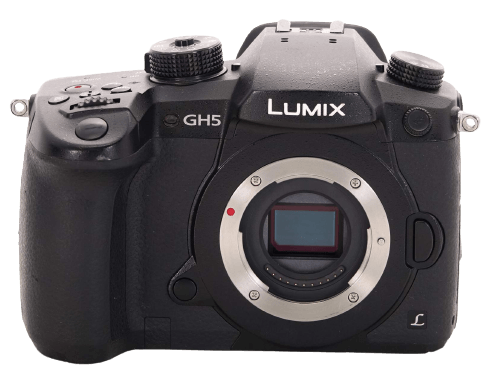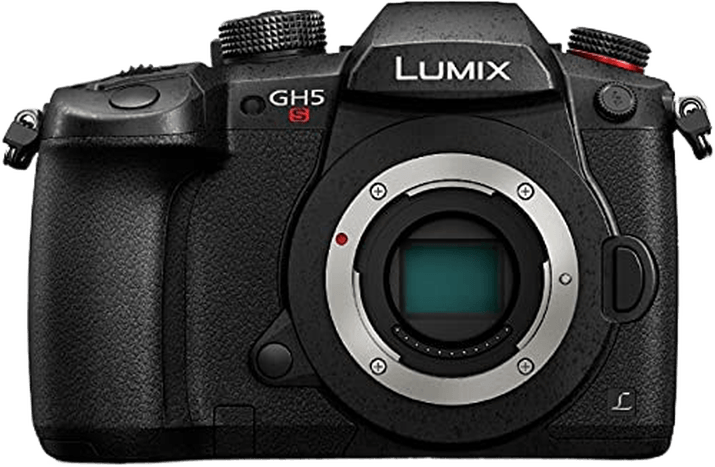Panasonic Lumix DC-GH5 vs Lumix GH5S Comparison
Panasonic Lumix DC-GH5

Panasonic Lumix GH5S

The Panasonic Lumix DC-GH5 takes the lead with a score of 72/100, while the Panasonic Lumix GH5S trails behind at 62/100. Both cameras are mirrorless and were announced in January 2017, with the GH5S being slightly more expensive at $2500 compared to the GH5’s $2000 price tag. They share the same dimensions (139 x 98 x 87mm), but the GH5S is lighter, weighing 660g versus the GH5’s 725g.
The GH5’s higher score signifies its superior performance in certain aspects, such as image stabilization and battery life. However, the GH5S excels in low-light sensitivity and video capabilities, making it a better choice for certain users.
Considering the price difference, the GH5 offers a great balance between performance and affordability, while the GH5S is a specialized option for those who prioritize video quality and low-light shooting. Ultimately, the best choice depends on the user’s priorities and preferences.
Panasonic Lumix DC-GH5 vs Lumix GH5S Overview and Optics
The Panasonic Lumix DC-GH5 emerges as the winner in the optics comparison with a score of 67/100, while the Panasonic Lumix GH5S scores 53/100. Both cameras share several common specifications, including a CMOS sensor, Venus Engine 10 processor, Micro Four Thirds sensor size, Micro 4/3 lens mount, and a shooting speed of 12.
The Lumix DC-GH5 outperforms the GH5S in several key areas. With 20.3 megapixels, it offers a significantly higher resolution than the GH5S’s 10 megapixels. This means that the DC-GH5 can capture more detailed images, making it a better choice for photographers who prioritize image quality. Additionally, the DC-GH5 has a DXOMARK sensor score of 77, compared to the GH5S’s score of 74. This indicates that the DC-GH5’s sensor performs better in terms of color depth, dynamic range, and low-light performance. Furthermore, the DC-GH5 features built-in image stabilization, which is absent in the GH5S. This makes the DC-GH5 a more versatile option for shooting in various conditions, as it can help reduce the effects of camera shake.
On the other hand, the Lumix GH5S does not have any notable advantages over the DC-GH5 in terms of optics. Its lower megapixel count and lack of image stabilization make it a less attractive option for photographers who prioritize image quality and versatility.
In comparing the optics of the Panasonic Lumix DC-GH5 and the Lumix GH5S, the DC-GH5 is the clear winner due to its higher megapixel count, better sensor performance, and built-in image stabilization. The GH5S, while sharing some common specifications, does not offer any significant advantages over the DC-GH5 in this category.
Panasonic Lumix DC-GH5 vs Lumix GH5S Video Performance
The Panasonic Lumix DC-GH5 and the Panasonic Lumix GH5S both have a video score of 69/100, indicating that their video capabilities are quite similar. Both cameras feature a maximum video resolution of 4K and maximum video dimensions of 4096 x 2160. Additionally, they both offer a maximum video frame rate of 60fps. Neither camera has built-in time-lapse functionality.
Despite sharing the same video score and several video specifications, there are areas where each camera excels. The Panasonic Lumix DC-GH5 is known for its exceptional image stabilization, making it an excellent choice for handheld video recording. This feature allows for smoother, more professional-looking footage, especially when capturing fast-moving subjects or shooting in challenging environments.
On the other hand, the Panasonic Lumix GH5S has a larger sensor, resulting in better low-light performance and higher dynamic range. This makes it a superior option for capturing video in dimly lit or high-contrast situations. The GH5S’s improved low-light capabilities enable filmmakers to produce higher quality footage in challenging lighting conditions.
In comparing the video capabilities of the Panasonic Lumix DC-GH5 and the Panasonic Lumix GH5S, it is evident that both cameras offer impressive performance. The DC-GH5’s image stabilization is ideal for handheld recording, while the GH5S’s larger sensor provides better low-light performance. Ultimately, the choice between these two cameras will depend on the specific needs and preferences of the user, as both offer strong video performance in their respective areas.
Panasonic Lumix DC-GH5 vs Lumix GH5S Features and Benefits
The Panasonic Lumix DC-GH5 and Panasonic Lumix GH5S both have a feature score of 87/100, making them equal in this aspect. They share several specifications, such as a 3.2-inch screen size, 1,620,000-dot screen resolution, touchscreen capabilities, flip screen, and the absence of GPS. Additionally, both cameras have WIFI and Bluetooth connectivity.
Despite having the same feature score, the Panasonic Lumix DC-GH5 is better in some aspects. It offers a more versatile and all-around performance, catering to various photography and videography needs. This makes it a suitable choice for users who require a camera that can handle different shooting situations effectively.
On the other hand, the Panasonic Lumix GH5S excels in low light performance and is designed specifically for videographers. It has a higher ISO range and better noise reduction, making it ideal for shooting in challenging lighting conditions. This specialization makes the GH5S a better choice for users who primarily focus on video production and require excellent low light capabilities.
In comparing the Panasonic Lumix DC-GH5 and Panasonic Lumix GH5S, both cameras have their strengths. The DC-GH5 is a more versatile option, suitable for a wide range of photography and videography needs, while the GH5S is tailored for low light performance and video production. Users should consider their specific requirements and preferences when choosing between these two capable cameras.
Panasonic Lumix DC-GH5 vs Lumix GH5S Storage and Battery
Both the Panasonic Lumix DC-GH5 and Panasonic Lumix GH5S have a storage and battery score of 57/100, making them equal in this aspect. They share common specifications, including two memory card slots, compatibility with SD/SDHC/SDXC (UHS-II) memory cards, and the use of the DMW-BLF19 battery type. Neither of them has USB charging.
The Panasonic Lumix GH5S has a slight advantage in battery life, offering 440 shots compared to the 410 shots provided by the Panasonic Lumix DC-GH5. This difference makes the GH5S more suitable for extended shooting sessions.
However, the Panasonic Lumix DC-GH5 does not offer any notable advantages in storage and battery over the GH5S. The two cameras are essentially equal in this department.
Considering their identical storage and battery scores, and the minimal difference in battery life, both cameras are suitable for various shooting situations. Users can choose between them based on their preferences and needs without worrying about significant differences in storage and battery performance.
Panasonic Lumix DC-GH5 vs Lumix GH5S Alternatives
So, Panasonic Lumix GH5 vs GH5S? Although the GH5S has some improvements, the GH5 has better specs overall. It’s also a little more expensive at the moment which can also be a deciding factor.

Panasonic Lumix DC-GH5
Keep in mind that what’s most important is finding a camera that feels comfortable in your hands and will allow you to capture the photos you envision.
If you want to check out some more comparisons for inspiration, why not start with these:
- Panasonic Lumix DC-GH5 vs GH6
- Panasonic Lumix DC-GH5 II vs GH6
- Panasonic Lumix DC-S5 vs Sony a7 IV
- Nikon D800 vs D850
- Canon Rebel T7 vs Nikon D3500
- Canon 5D Mark IV vs 5DS R
- Canon R3 vs R6
We hope this comparison of specs and features has helped make your decision easier. let us know your own experiences in the comments below. And, happy shooting!
